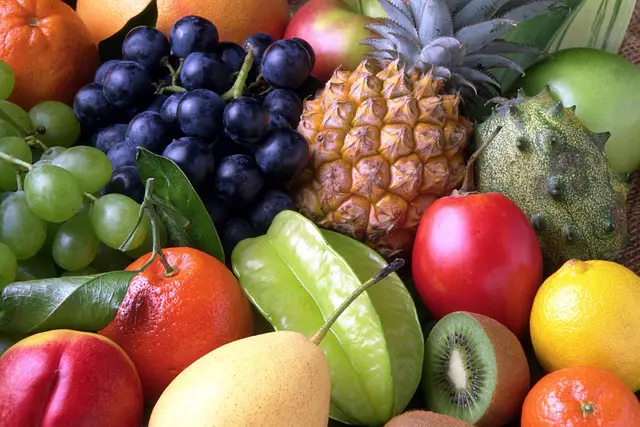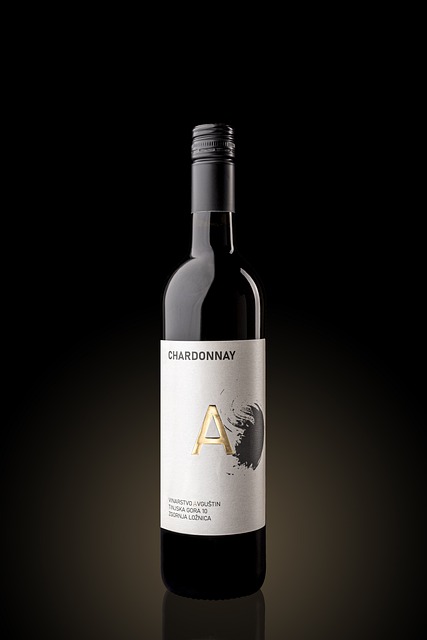Are you a self-proclaimed wine enthusiast, eager to expand your knowledge of one of the world’s most beloved varietals? Look no further than our comprehensive A to Z Chardonnay Guide! From the lively lemon and apple notes to the rich hazelnut undertones, Chardonnay offers a diverse array of flavors that can transport your taste buds to new heights. In this article, we will take you on a journey through the different varieties and tastes of Chardonnay, equipping you with the knowledge needed to confidently navigate the world of this remarkable wine. Whether you’re a seasoned sommelier or just beginning your wine exploration, our guide will provide you with the insights you need to appreciate and savor Chardonnay like never before. So, raise your glass and prepare to embark on this enlightening adventure!
Obsah
- Different Varieties of Chardonnay: From Classic to Modern
- Understanding the Characteristics of Classic Chardonnay
- Exploring the Influence of Oak Aging on Chardonnay
- Unveiling the Array of Fruit Tastes in Chardonnay
- Discovering Refreshing Unoaked Chardonnays
- Decoding the Complexities of Sparkling Chardonnay
- Embracing the World of Chardonnay Blends
- Expert Recommendations for Food Pairings with Chardonnay
Different Varieties of Chardonnay: From Classic to Modern
Chardonnay is one of the most popular and versatile white wine grape varieties in the world. Its wide range of styles makes it a favorite among wine enthusiasts. From classic to modern, Chardonnay offers a diverse selection of flavors and aromas that cater to various palates. Here are some distinct varieties of Chardonnay that are worth exploring:
- Classic Chardonnay: Known for its rich and buttery characteristics, classic Chardonnay is aged in oak barrels, allowing the wine to develop a smooth and creamy texture. These wines often exhibit flavors of vanilla, caramel, and ripe tropical fruits. They are elegant, well-rounded, and pair beautifully with dishes such as roasted chicken and creamy pasta.
- Unoaked Chardonnay: For those seeking a lighter and crisper style, unoaked Chardonnay is an excellent choice. With minimal to no oak influence during production, these wines showcase the natural fruit flavors of Chardonnay. Unoaked Chardonnay typically exhibits bright acidity, refreshing citrus notes, and hints of green apple. This style perfectly complements seafood dishes and summer salads.
Aside from the classic and unoaked styles, Chardonnay has also evolved to embrace modern winemaking techniques, resulting in innovative variations that showcase the grape’s versatility. These alternatives, often referred to as “New World Chardonnay,” push boundaries and offer a unique tasting experience. Some examples include:
- Oaked Chardonnay with a Twist: Winemakers experiment with various oak aging methods to create unexpected flavors and textures. From using different oak types to playing with toasting levels, these modern Chardonnays may exhibit smoky, toasty, or even spicy characteristics. These bold and complex wines make a great match for grilled seafood and creamy mushroom risotto.
- Fruit-Forward Chardonnay: To emphasize the fruitiness of Chardonnay, some winemakers focus on maximizing the expression of ripe fruit flavors like pineapple, peach, and melon. These wines are often produced in regions with warmer climates, resulting in a richer, fruit-driven style. Fruit-forward Chardonnays pair delightfully with bold cheeses, roasted poultry, and tangy sauces.
Understanding the Characteristics of Classic Chardonnay
Classic Chardonnay is a renowned white wine that has captured the hearts and palates of wine enthusiasts worldwide. With its versatile nature and distinct characteristics, it is no wonder that Chardonnay has become one of the most widely planted grape varieties.
When exploring the world of Chardonnay, there are a few key characteristics that set it apart from other wines. First and foremost, Chardonnay is known for its full-bodied nature, offering a rich and buttery texture that coats the palate with every sip. This luscious mouthfeel is often accompanied by flavors of tropical fruits such as pineapple, mango, and melon, which contribute to its pleasant and refreshing taste.
- Impeccable Aging Potential: Classic Chardonnay has a remarkable ability to age gracefully. When aged in oak barrels, it develops complex flavors of caramel, vanilla, and butterscotch, adding layers of depth to the wine.
- Expressive Terroir: Chardonnay has a unique ability to showcase the nuances of its terroir, allowing wine enthusiasts to taste the distinct flavors imparted by different regions. From the mineral-driven elegance of Chablis to the opulent and tropical expressions from California, Chardonnay’s adaptability makes it a joy to explore.
- Food Pairing Versatility: Due to its rich and versatile nature, Classic Chardonnay pairs well with a wide range of dishes. It effortlessly complements creamy pastas, roasted poultry, and seafood dishes, making it a beloved choice for many fine dining experiences.
Whether you are a wine connoisseur or just starting your journey into the world of wine, exploring the characteristics of Classic Chardonnay is an adventure that promises to delight. Its full-bodied texture, tropical flavors, and aging potential make it a timeless choice for wine enthusiasts seeking an unforgettable experience.
Exploring the Influence of Oak Aging on Chardonnay
The influence of oak aging on Chardonnay is a fascinating area of study for wine enthusiasts and connoisseurs. Oak aging refers to the process of fermenting and aging Chardonnay wines in oak barrels, which imparts unique flavors, aromas, and textures to the final product. Here, we will explore the various ways in which oak aging affects Chardonnay, offering a deeper understanding of this beloved wine varietal.
1. Flavor Enhancement: Oak aging contributes to the development of rich and complex flavors in Chardonnay. As the wine interacts with the wood, it absorbs compounds such as vanillin, lactones, and tannins from the oak, lending notes of vanilla, butter, and caramel to the wine. This process creates a delightful balance between fruitiness and oakiness, resulting in a wine with layers of flavor.
2. Textural Transformation: Oak aging also significantly impacts the texture of Chardonnay wines. The porous nature of oak barrels allows a controlled amount of oxygen to interact with the wine, promoting gradual oxidation. This oxygen exposure softens the wine’s acidity and tannin content, resulting in a smoother and creamier mouthfeel. The added weight and complexity from oak aging contribute to a fuller body, effortlessly coating the palate and enhancing the overall drinking experience.
Unveiling the Array of Fruit Tastes in Chardonnay
The Array of Fruit Tastes in Chardonnay
When it comes to white wines, Chardonnay stands as a true powerhouse. This versatile grape variety not only offers a wide range of flavors but also showcases an impressive array of fruit tastes that can entice even the most discerning palates. From luscious tropical fruits to zesty citrus notes, Chardonnay is a fruit-lover’s delight.
Here is a glimpse into the magnificent spectrum of fruit flavors that can be found in Chardonnay:
- Apple: Chardonnay often exhibits the delicious taste of crisp, juicy apples. Look out for flavors ranging from refreshing Granny Smith to sweet Golden Delicious, adding a lovely fruitiness to your glass.
- Peach: Many Chardonnays display hints of succulent peaches, providing a velvety smoothness and a touch of sweetness. This subtle note adds a luscious texture that perfectly complements the wine’s acidity.
- Pear: Delicate and fragrant, the presence of pear in Chardonnay brings a delightful balance of sweetness and acidity to the forefront. Enjoy the nuances of different pear varieties, ranging from crisp Bartlett to the buttery essence of Asian pears.
These are just a few examples of the fruit flavors that await discovery in Chardonnay. Whether you prefer your wine to have hints of tropical fruits like pineapple, mango, and banana, or prefer the vibrant zing of citrus fruits like lemon, grapefruit, and lime, Chardonnay has something for everyone. Explore the magic of this grape varietal and experience the diversity of fruit tastes it has to offer.
Discovering Refreshing Unoaked Chardonnays
When it comes to Chardonnay, many wine enthusiasts are familiar with the oaky, buttery flavors often associated with this popular white wine. However, there is a hidden gem within the vast world of Chardonnays that offer a refreshing twist – unoaked Chardonnays. These wines are made without the influence of oak barrels, allowing the true character of the grape to shine through. If you’re looking to discover a new and revitalizing Chardonnay, here are some reasons why unoaked varieties should be on your radar:
1. Pure Expression: Unoaked Chardonnays offer a pure expression of the grape’s natural flavors and aromas. Without the influence of oak, the crispness and freshness of the fruit are allowed to take center stage. Expect vibrant citrus notes, tropical fruits, and a lively acidity that dances on your palate.
2. Versatility: Unoaked Chardonnays are incredibly versatile when it comes to food pairing. Unlike their oaky counterparts, these wines have a lighter body and a more delicate profile, making them a fantastic match for a wide variety of dishes. From seafood and salads to lighter poultry or even vegetarian fare, these refreshing Chardonnays will complement your meal beautifully.
Decoding the Complexities of Sparkling Chardonnay
Understanding the Intricacies of Sparkling Chardonnay
When it comes to sparkling wines, Chardonnay is often overlooked due to its complexity. However, delving into the depths of this varietal can be an enlightening experience for wine enthusiasts. Produced using the same traditional method employed for Champagne, sparkling Chardonnay offers a unique combination of elegance and complexity that is truly unparalleled.
So, what sets sparkling Chardonnay apart? Let’s start with its beautiful, pale golden hue that tantalizes the eye. This wine is known for its fine, persistent bubbles, which playfully dance on the tongue with each sip. On the nose, expect vibrant aromas of green apple, citrus, and subtle floral notes, all delicately intertwined. The harmonious balance of crisp acidity and creamy texture creates a palate experience that is both refreshing and indulgent.
- Chardonnay grapes undergo a meticulous selection process before being used in the production of sparkling wines.
- The grapes are carefully harvested, ensuring optimal ripeness, to impart the desired flavors and aromas.
- Sparkling Chardonnay is aged on its lees for an extended period, enhancing complexity and adding depth to the final product.
For those seeking a sophisticated sparkler that offers a unique twist on tradition, sparkling Chardonnay is the perfect choice. Its versatility as an aperitif or a delightful companion to seafood, poultry, or creamy cheeses is unmatched. Whether celebrating moments of joy or simply indulging in the artistry of winemaking, the complexities of sparkling Chardonnay are waiting to be discovered and savored.
Embracing the World of Chardonnay Blends
When it comes to wine, Chardonnay is a versatile grape that has captured the hearts of wine enthusiasts worldwide. One of the reasons why Chardonnay is so beloved is its ability to blend seamlessly with other grape varieties, resulting in unique and complex flavors. opens up a whole new realm of wine exploration, allowing you to discover exciting combinations that perfectly balance the qualities of different grapes.
There are several grape varieties that are commonly blended with Chardonnay, each bringing its own characteristics to the final wine. Some of the most popular choices include:
- Sauvignon Blanc: Adding Sauvignon Blanc to Chardonnay brings a refreshing acidity and vibrant citrus flavors to the blend, resulting in a crisp and lively wine.
- Pinot Grigio: Combining the rich texture of Chardonnay with the zesty and floral notes of Pinot Grigio results in a well-rounded and aromatic wine, perfect for summer evenings.
- Riesling: By blending Riesling with Chardonnay, you can achieve a delightful balance between acidity and sweetness, creating a harmonious wine with notes of stone fruits and a luscious mouthfeel.
Exploring the world of Chardonnay blends allows you to experience a wide range of flavors and find your own personal favorites. Whether you prefer a crisp and citrusy wine or a more rounded and complex profile, there is sure to be a Chardonnay blend that suits your taste. So, why not raise a glass to the beauty of Chardonnay blends and embark on a delicious journey through the diverse world of wines?
Expert Recommendations for Food Pairings with Chardonnay
When it comes to pairing food with Chardonnay, experts suggest focusing on complementing its rich flavors and buttery notes. The versatility of this white wine allows for a wide range of food pairings, making it a popular choice for many occasions. Whether you prefer a crisp and unoaked Chardonnay or a creamy and oak-aged one, here are some expert recommendations to enhance your tasting experience:
1. Seafood: Chardonnay’s smooth texture and subtle acidity make it an excellent match for various seafood dishes. Try pairing it with buttery lobster, grilled salmon, or seared scallops. The wine’s citrus and tropical fruit flavors perfectly balance the richness of the seafood, creating a harmonious combination.
2. Creamy Dishes: Chardonnay’s creamy mouthfeel and flavors of vanilla and butterscotch make it an ideal companion for creamy dishes. Indulge in the pairing of a oaked Chardonnay with creamy pasta dishes like fettuccine alfredo or risotto with wild mushrooms. The wine’s richness complements the dish while cutting through the creaminess, resulting in a delightful contrast of flavors.
In conclusion, this comprehensive A to Z Chardonnay guide provides invaluable insights and knowledge about the various varieties and tastes available. Whether you’re a seasoned wine enthusiast or a curious beginner, this guide will help navigate the diverse world of Chardonnay with confidence.











